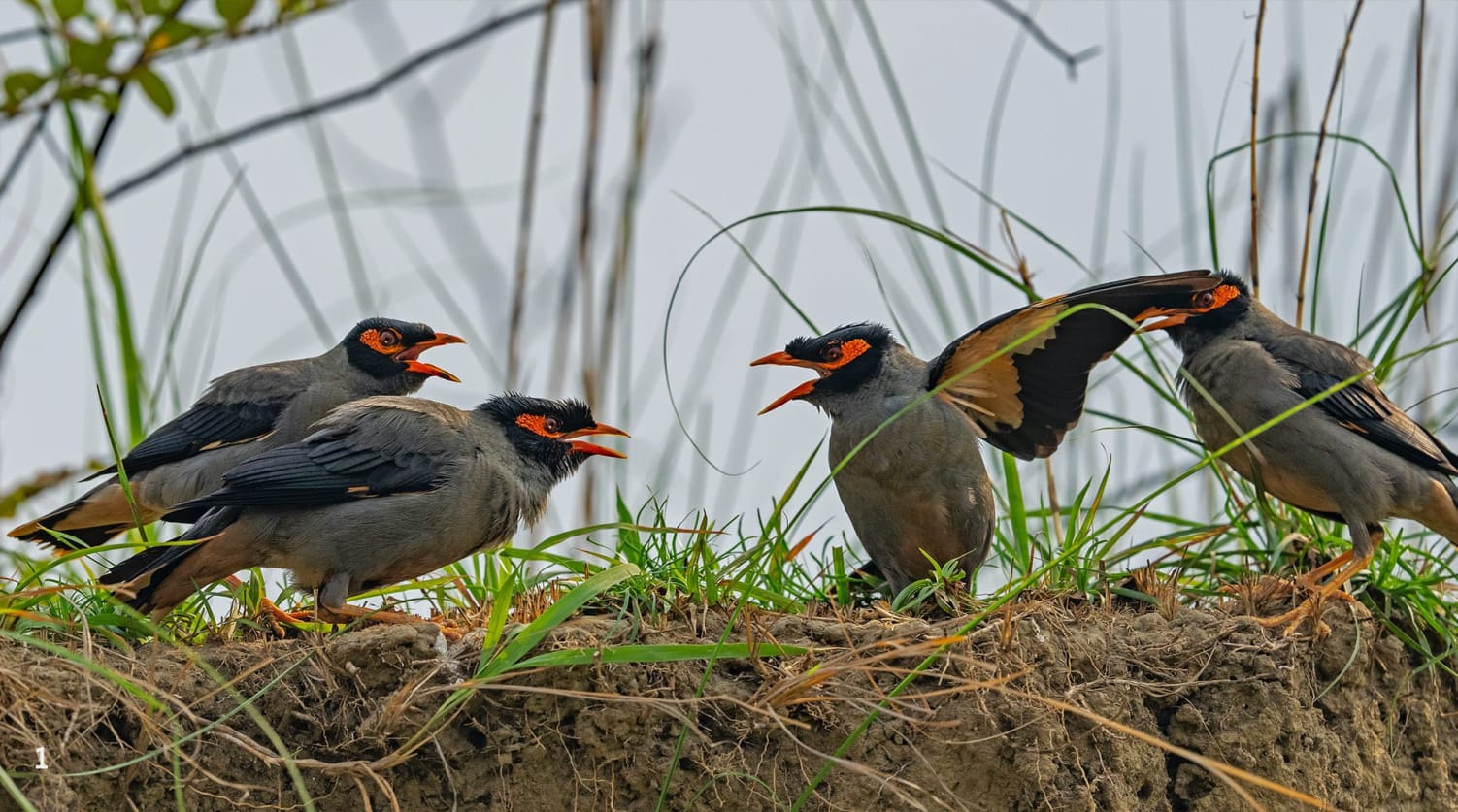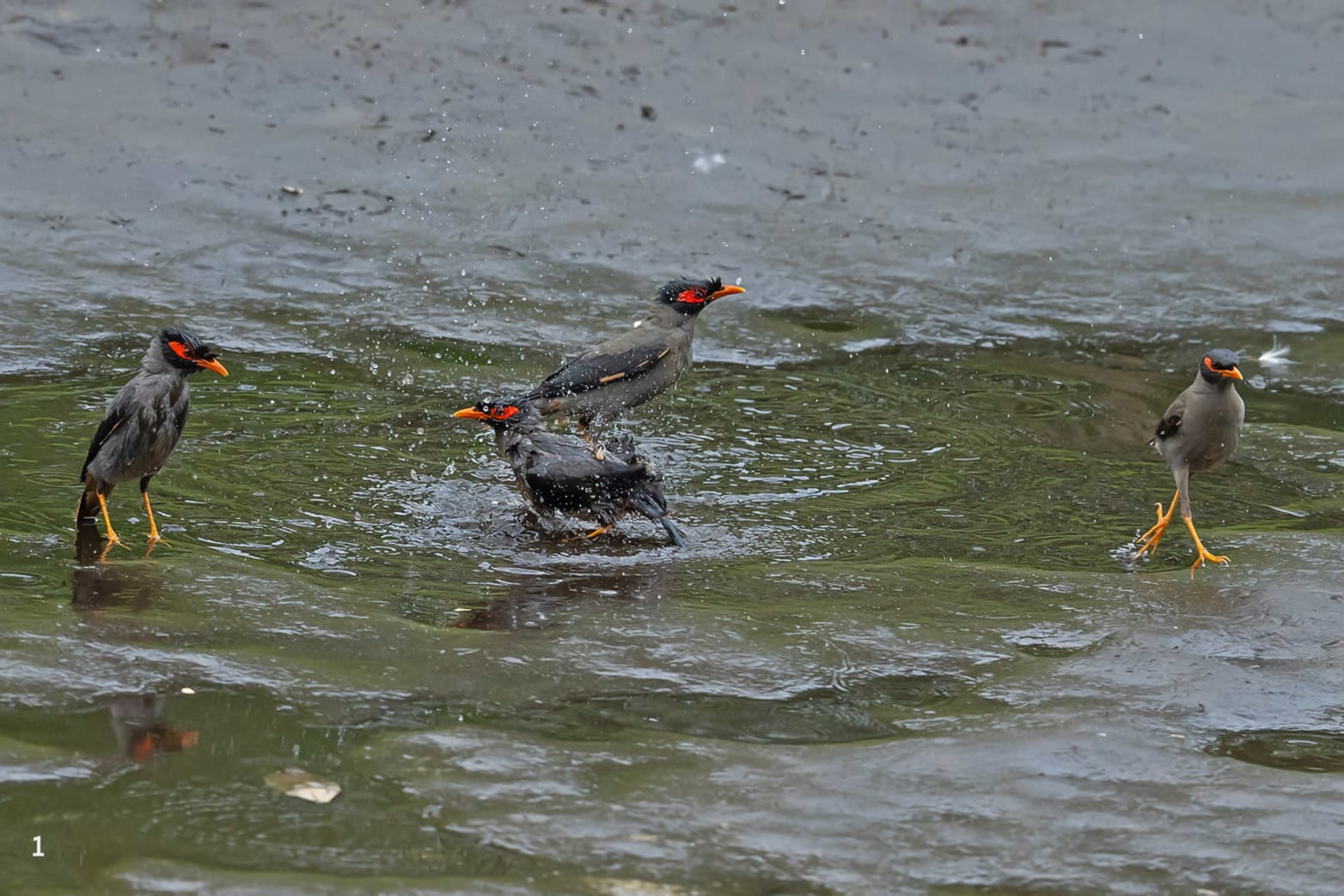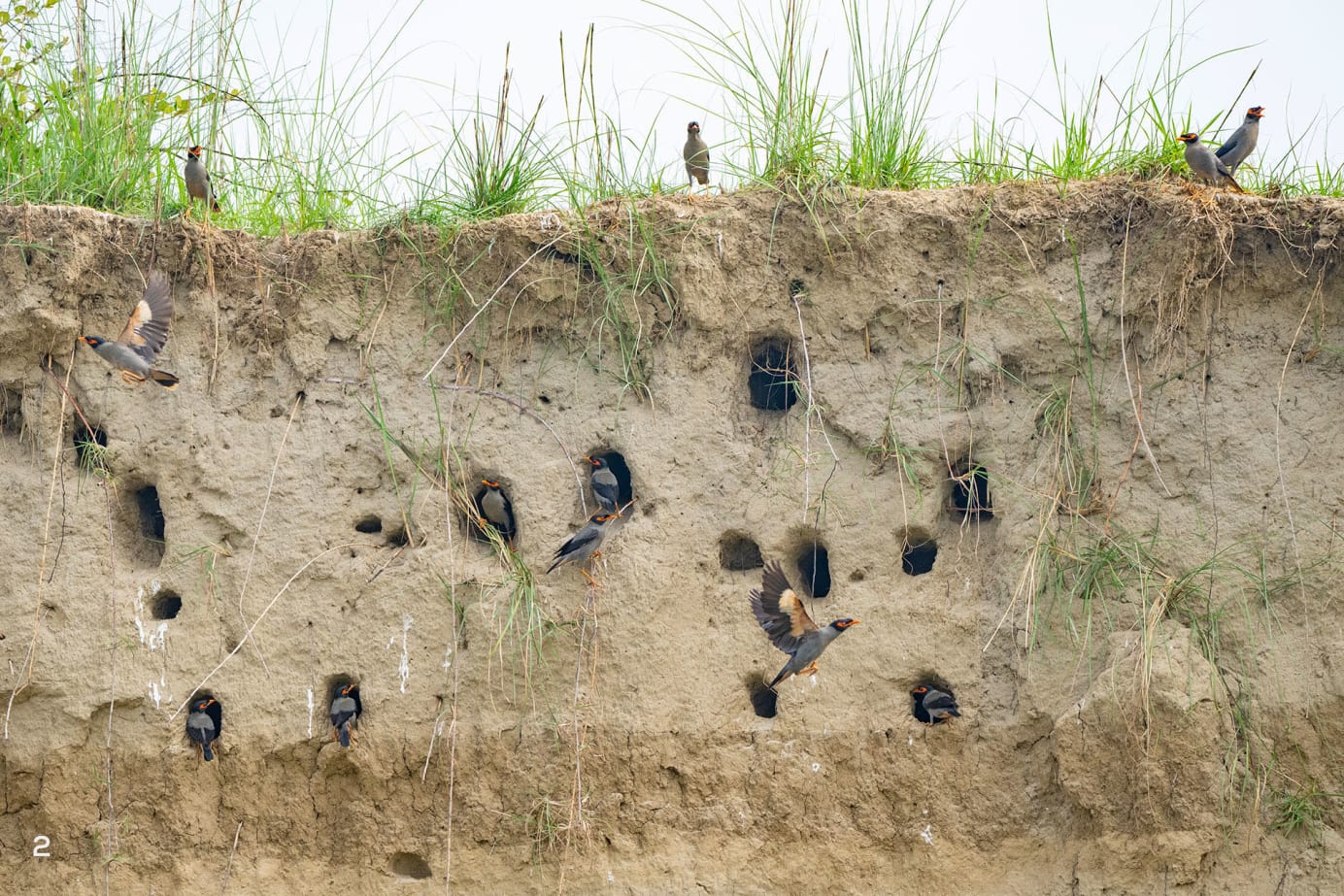 Listen to this article
•
15:34 min
Listen to this article
•
15:34 min
The study of animal and plant distribution (biogeography) is an interesting science with numerous puzzles that scientists are unable to explain even today. Globally, most species have a fairly narrow distribution. This may be due to geographical barriers (like mountains, rivers, oceans, unsuitable habitats), geological upheavals, where their ancestors lived, vegetation they require, or other reasons. In the last several thousand years, human-related activities have changed the distribution of many species. House sparrows and blue rock pigeons are classic examples — they are now found wherever humans live.
The “Laxman Rekha”
Most species belonging to the Sturnidae family (mynas, starlings, grackles) are widespread in Asia, Europe, and Africa. Out of the 120-odd species, tropical Asia and sub-Saharan Africa harbour most members of Sturnidae. In South Asia, 24 species are recorded, including some stray records. The common myna (Acridotheres tristis) is the most widespread, occurring everywhere except the high reaches of Ladakh. Its cousin, the bank myna (Acridotheres ginginianus), is endemic to northern India, parts of Pakistan, southern Nepal, and border areas of Bangladesh. Its southern distribution stops somewhere in Central India. I have always been intrigued by the distribution line running from Mumbai in the west to Balasore in Odisha. Below this imaginary line, the bank myna is not found (except for a few stray records).
Cover Photo: The bank myna has a similar range and colouration as the common myna but has a greyer and smaller body.
Like the common myna, the bank myna is an adaptable, commensal species (i.e., it benefits from living close to humans). It occurs in large flocks in most small towns and villages in northern India. The dainty birds cheekily steal food from busy eateries, walk around confidently on crowded streets picking titbits, and roost in huge flocks at busy railway stations. They successfully breed in old houses, cavities in trees, monuments, underneath bridges, or anywhere they find a suitable hole. I have seen this bird inspecting the drill holes (technically called “weep holes” in engineering parlance) in an underpass, on the way to Delhi airport. The question it raises for me is: when it can live commensally in north Indian towns, why has it not reached south India? What stops it from crossing this imaginary distribution line and going further south? There is no physical barrier, and the South Indian landscape and towns are not very different from North India. While the common myna has reached Sri Lanka, some enigmatic factors stop the bank myna from colonising peninsular India.
The bank myna is not a habitat or food specialist, it partakes of sweets and namkeen from sweetshops, worms from crop fields and grasslands, follows domestic and wild animals for disturbed insects, and enjoys rotis/biscuits offered by retired uncles in housing societies. It has even adapted to live in temperate countries like Taiwan and Japan (released/escaped birds from the pet trade have become well-established in their alien land). Normally released pets die on foreign soil, but some resilient ones survive and slowly establish themselves. When the bank myna can establish itself in Taiwan and Japan, which are very different from India, why hasn’t it spread to South India? (We have occasional records from Vishakapatanam, Chennai and Srikakulam, but not in significant numbers.)
Nesting habits
The bank myna, as its name indicates, frequently nests on the banks of large rivers, excavating holes in the soft mud. The nest is a crude mixture of sticks, feathers, and even plastic pieces, where they lay 3-5 eggs. The fledged chicks follow the parents, perpetually hungry and begging for food. The breeding happens from late April to August, with two broods sometimes raised in a season.
Fights for premium holes are frequent. Often a nest hole made by a bee-eater is taken over by aggressive bank mynas. Frequent territorial fights (with other bank mynas) break out; if the opponents are equal, the fight can last many minutes. Squabbles and skirmishes continue all through the breeding season. Once the chicks fledge, they follow their parents for many weeks. By October-November, pairs and fledglings join large flocks and rivalries are mostly forgotten.
Safety in numbers
Bank mynas roost in large numbers, often in towns and villages and, intriguingly, near busy railway stations. Many species roost colonially as there is safety in numbers. Statisticians tell us the probability of getting caught by a predator is proportionate to the total number of individuals in a flock. For instance, if there are a hundred individuals, the chance of a particular individual getting killed is 1 per cent; if there are 1,000 individuals, the chance is 0.1 per cent and so on. The larger the flock, the lower the chance of an individual being preyed upon. The flip side is that predators may discover large flocks more easily, and the benefits of flocking can reduce or even cancel out. But the fact that these mynas still flock for roosting (and foraging) indicates that the benefits of flocking outweigh the danger of discovery by predators. It would be good if we could have research that studies the cost-benefit analysis of myna flocking behaviour.

Noisy Gatherings
Pre-roosting behaviour of mynas involves them coming from all directions in small flocks and making a ruckus before settling down. I witnessed this at Jhansi railway station one evening nearly 35 years ago while waiting for a train. I watched endless streams of mynas flying to two old pilkhan (Ficus virens) trees. Several questions arose in my mind: first, why select a railway station with all the noise, people, trains coming and going, air and light pollution throughout the night? Second, why make so much noise before settling down? Probably the birds know that with so much disturbance all around, no night predator would come near their roosting trees.
My third question: The mynas make so much noise before roosting that any predator would get attracted, so why are they so noisy? I still do not have an answer. Even flocks of parakeets, crows, and sparrows make lots of noise before settling down to sleep. I have noticed frequent scuffles, flying around, resettling, and chaos for 30-40 minutes before the birds go to sleep. Is it a fight for the most secure sleeping spot – generally in the middle so if predation takes place, the birds on the fringe will become victims? Do the dominant individuals get the best seats every time? These are interesting questions that need answers through detailed research.

Mynas and the pet trade
I’d like to end with another story that goes back to 1985 when I was driving through Bihar en route to Assam. Somewhere after Begusarai, I saw some people selling “hill mynas” — the bird famous for imitating the human voice and hence a popular pet and prized caged bird. The birds did not look like hill mynas (Gracula religiosa) to me. I pretended I had no knowledge about birds and started bargaining with the seller. He asked for Rs 500 (a princely sum at the time) and slowly reduced the price to Rs 300. As the bargaining progressed, a small crowd gathered around us, some people furtively mocking me for my ignorance of birds. I went to the car pretending to bring money and instead brought the Pictorial Guide of the Birds of the Indian Subcontinent and showed him the bank myna illustration. The trader, who had coloured the bank myna to look like a hill myna, insisted it was a hill myna from the dense Himalayan jungles. To his dismay, the bank myna called out with its characteristic vocalisation. I pointed out to him that he had a bardid myna (local name for bank myna), sending laughter through the crowd. The shrewd trader, shocked at being uncovered, disappeared sheepishly. In 1994, passing through the same place, I saw the same man on the same spot selling his so-called hill mynas, indicating that sadly, even ten years later, many peripatetic customers keep this illegal trade alive.












